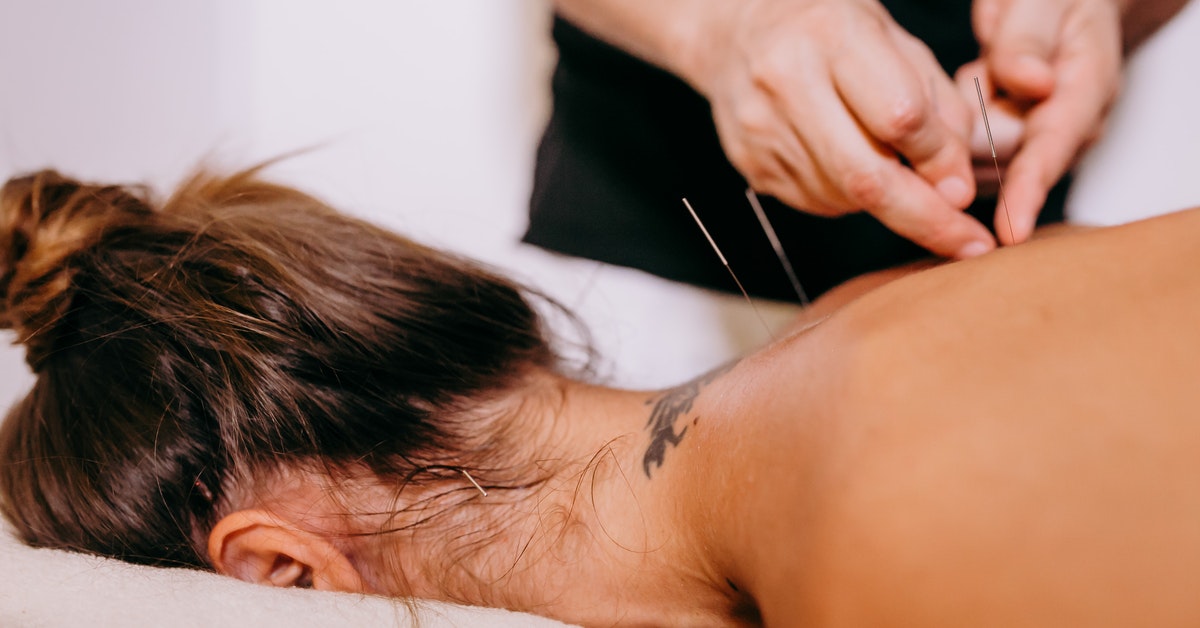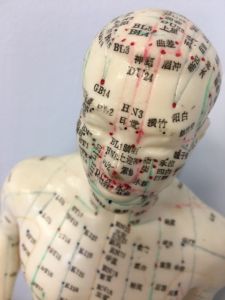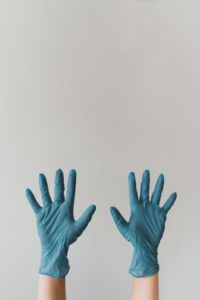“Dry needling” is a term that has been popping up recently on the internet and at health care offices. The procedure can be confusing because in pictures it looks exactly like acupuncture. Dry-needling is actually a different treatment that can help relieve certain types of pain. We’ve put together this list of answers to the six most commonly asked questions about dry-needling to help you decide if this procedure is right for you.
1. What is the difference between Dry Needling and Acupuncture?
Both procedures involve the placement of extremely thin needles into the skin, but they are based on different medical theories and strive to achieve different things. While acupuncture is effective for pain, it is also used for a broad variety of other disorders, everything from infertility to gastrointestinal problems. Dry needling is specifically for musculoskeletal pain.
Acupuncture is based on Eastern medical theories. During acupuncture treatment the needles are inserted in different areas of the body, not only in the painful area. Acupuncturists use their knowledge of meridians to decide where to place the needles. Meridians can be visualized as lines that criss-cross the body and represent connections between nerves and organ systems. The goal of acupuncture is to bring body systems back into balance by freeing blocked energy within these meridians. Scientific studies have shown that acupuncture causes a rise in endorphins and a suppression of stress hormones. Scientists think that these chemicals are responsible for acupuncture’s pain relieving affects.
Dry needling targets muscular trigger points– what you might think of as knots. These areas of tight, contracted muscle tissue are responsible for the pain, stiffness, and limited range of movement that many patients experience. The insertion of a fine needle into the trigger point creates a tiny lesion in the skin. The body reacts to this lesion by stimulating blood flow to the area and promoting relaxation and healing of the muscle tissue.
2. Is It Safe?
Health care practitioners must take a state-certified course to become licensed in dry-needling. Sterile, single-use needles should be used, and the therapy should be performed in a sterile medical environment. When performed by a certified professional who follows these guidelines, dry needling is safe and effective. Mild side effects may occur, such as bruising or mild pain at the treatment site. Most people don’t experience any side effects.
3. What Conditions Can It Treat?
Dry needling is specifically used for muscle pain and stiffness that is being caused or aggravated by trigger points. If your chiropractor thinks that trigger points are contributing to your pain, he may recommend dry needling as a part of your treatment plan. Back and neck injuries almost always involve trigger points. Dry needling is also effective for plantar fasciitis. Trigger points are usually a symptom rather than a cause. They can form when vertebrae have been misaligned due to an injury. This misalignment puts a strain on tendons, ligaments, and muscles, causing muscles to constrict and form trigger points. Soft tissue strains and injuries that don’t involve vertebrae can also form trigger points.
Dry needling is seldom used alone. It works better when combined with other treatments that address all the underlying reasons for the patient’s pain. For instance, chiropractic adjustment or posture correction may be needed to realign vertebrae and relieve the muscle strain. Dry needling can be used as an adjunct therapy to help clear up current trigger points and relieve pain quicker than chiropractic adjustment alone. Trigger points will reoccur if the underlying problem is not treated.
4. How Many Treatments Will I Need?
Most patients experience immediate relief after their first dry-needling session, but two to three sessions are needed on average to keep the pain away. How many sessions you need will depend on your injury and on the other treatments you are receiving. You may need a few sessions at the beginning of your chiropractic treatment to relieve your pain so you can perform daily activities. If other trigger points form before you are completely healed you can have more treatments to resolve these.
5. What Should I Expect During Treatment?
Dry needling sessions are generally very quick and are often performed during your appointment for chiropractic adjustment. You will remain fully clothed, with only the treatment area uncovered, and will sit or lie in a comfortable position. You may feel some slight discomfort as the needles are inserted, but most patients don’t feel anything once they are in place. Most practitioners allow the needles to stay inserted for a few minutes before removing them.
Afterward, you may experience mild pain or swelling at the treatment site. Your chiropractor will let you know if you should ice the area or preform other home care. You will be able to go about daily activities, work, etc., after the procedure (unless other pain or injury prevents this.) You may need to come for treatment once or twice a week until your pain is resolved. As noted above, this usually takes two or three sessions, but you will probably feel better after your first treatment.
6. Is Dry Needling Right For Me?
Dry needling is a safe and effective treatment for those suffering from musculoskeletal pain and trigger points. It is ideal for patients going through lengthy treatment for an injury who require more immediate pain relief. When combined with other treatments, dry needling can help speed healing and make it possible for patients to live their lives with less pain during the healing process.








